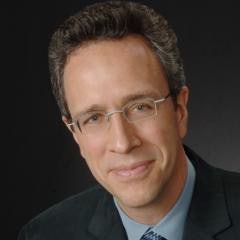Dual enrollment programs started out as a common sense idea: let students take college level classes through their local community college while still in high school. Credits they earn can go toward a future degree and potentially cut down on the time and cost of earning a bachelor’s or associate’s degree.
 Dr. Davis Jenkins
Dr. Davis JenkinsA new report from the Community College Research Center (CCRC) sheds some light on postsecondary degree-completion outcomes once students leave high school on a state-by-state basis. CCRC found that nearly half of dual enrollment students nationally who matriculated at a community college earned a postsecondary credential five years after high school, with the caveat that higher-income students were statistically more likely to earn a bachelor’s degree than their lower-income peers.
“Overall, dual enrollment students are more likely to graduate college and to do so sooner,” said Dr. Davis Jenkins, senior research scholar at CCRC. “But just taking college courses, especially for low-income students, isn’t enough.”
Jenkins added that the findings support other studies that low-income students are more likely to lack additional support systems outside the classroom, making it more difficult for them to achieve their college-going goals. On average, 43 percent of lower-income dual enrollment students who matriculated at a community college earned a degree or certificate within five years compared to 50 percent of their higher-income peers.
Dual enrollment programs had dramatically different results in terms of postsecondary degree completion across states. In Florida, Minnesota and Mississippi, more than 60 percent of dual enrollment students who first matriculated at a community college earned a credential or degree five years after high school. By contrast, 30 percent or less of students earned a degree or credential within five years in Louisiana, California and West Virginia.
Nationally, taking dual enrollment classes in high school is a strong indicator that a student will go on to college. Only about 12 percent of students who take a dual enrollment class in high school do not enroll in college. However, those numbers vary across states.
States would benefit from tracking results more closely to better understand what might be holding some students back and where programs could be improved, Jenkins said. Better data could shed more light on outcomes pertaining to equity, such as race and socioeconomic standing, and give schools a better sense of what courses students are taking and whether their credits are being counted toward a degree or certificate.
“It’s sort of a Wild West,” Jenkins said. “People aren’t looking at the outcomes and what’s happening to these students.”
According to the most recent federal data available, about 1.9 million students, or 11 percent of the high school population, took some form of dual-enrollment course in the 2010-2011 academic years. In 2002-2003, 1.2 million high school classes were enrolled in a dual enrollment class.
The numbers enrolled today are much higher, Jenkins estimated. “Dual enrollment has just exploded,” he said. “The last census we had was in 2010… but we know [the numbers of students enrolled have] grown much more since then.” As the share of adult learners attending community college has declined, schools are making up the difference by enrolling more high school students.
Staff writer Catherine Morris can be reached at [email protected].

![Mentor Mentee [60287]](https://img.diverseeducation.com/files/base/diverse/all/image/2024/04/Mentor_mentee__60287_.662959db8fddb.png?auto=format%2Ccompress&fit=crop&h=100&q=70&w=100)



















